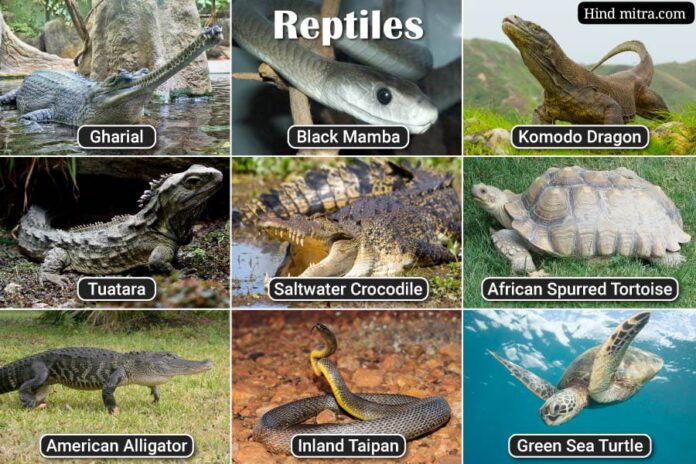General Knowledge: The world of reptiles is teeming with fascinating creatures, from the colossal crocodiles ruling the rivers to the color-changing chameleons blending into their surroundings. Have you ever wondered which reptile holds the title of the longest, or how some manage to survive for centuries? Get ready to unlock the secrets of these scaly survivors with 50 amazing general knowledge questions and answers that will shed light on their remarkable adaptations, surprising behaviors, and unique place in our world!
1.Question: What is the largest living species of reptile?
Answer: Saltwater Crocodile.
2.Question: Which reptile is known for its ability to change color?
Answer: Chameleon.
3.Question: What is the scientific name for the study of reptiles and amphibians?
Answer: Herpetology.
4.Question: Which reptile can detach its tail as a defense mechanism?
Answer: Lizard.
5.Question: What type of reptile is the Komodo dragon?
Answer: Lizard.
6.Question: How many chambers does a reptile’s heart typically have?
Answer: Three chambers (except crocodiles, which have four).
7.Question: Which reptile has the longest lifespan?
Answer: Galápagos Tortoise.
8.Question: What kind of reptile is a Gila monster?
Answer: Venomous lizard.
9.Question: Which reptile is known to have a “third eye” on top of its head?
Answer: Tuatara.
10.Question: What is the primary diet of most snakes?
Answer: Carnivorous (eating animals such as rodents, birds, and other small creatures).
11.Question: Which reptile is known for its powerful bite and “death roll” technique?
Answer: Crocodile.
12.Question: What kind of habitat do most reptiles prefer?
Answer: Warm environments such as deserts, tropical forests, and grasslands.
Reptiles behavior and life style
13.Question: Which reptile can run on water?
Answer: Basilisk lizard (also known as the “Jesus lizard”).
14.Question: What unique reproductive method do some species of reptiles exhibit, where the young develop inside the female’s body and are born live?
Answer: Ovoviviparity.
15.Question: Which reptile has a tongue longer than its body?
Answer: Chameleon.
16.Question: What adaptation allows reptiles to conserve water and live in arid environments?
Answer: Scaly skin that reduces water loss.
17.Question: Which reptile is known for its deadly venom and neurotoxic bite?
Answer: King Cobra.
18.Question: How do reptiles regulate their body temperature?
Answer: They are ectothermic (cold-blooded) and regulate temperature through external sources like the sun.
Read More: Celebrating Father’s Day 2024: Honoring the Silent Pillars of Strength
19.Question: What is the term for reptiles shedding their skin?
Answer: Ecdysis.
20.Question: Which reptile is considered the fastest land animal over short distances?
Answer: Spiny-tailed iguana.
21.Question: What sensory organ do snakes use to detect chemical signals in their environment?
Answer: Jacobson’s organ (or vomeronasal organ).
22.Question: Which reptile has a hard shell made up of a carapace and a plastron?
Answer: Turtle.
23.Question: What is the primary purpose of a crocodile’s nictitating membrane?
Answer: To protect the eyes underwater.
24.Question: Which reptile is known for having a forked tongue?
Answer: Snake.
25.Question: How many species of reptiles are estimated to exist worldwide?
Answer: Approximately 12,000 species.
26.Question: What do you call a group of lizards?
Answer: A lounge.
27.Question: Which reptile can live in both fresh and saltwater?
Answer: Sea Turtle.
28.Question: What is the largest species of snake?
Answer: Green Anaconda.
29.Question: Which reptiles are known for their parthenogenetic reproduction (producing offspring without fertilization)?
Answer: Some species of lizards and snakes.
30.Question: What unique feature do snakes have that allows them to swallow prey larger than their head?
Answer: Flexible jaw.
31.Question: Which reptile has the ability to “play dead” as a defense mechanism?
Answer:Hognose snake.
32.Question: What are the two main types of venomous snakes?
Answer: Vipers and Elapids.
33.Question: What is the term for reptiles that are active during the day?
Answer: Diurnal.
34.Question: Which reptile has a highly developed sense of infrared detection?
Answer: Pit Viper.
35.Question:What kind of diet does a herbivorous reptile have?
Answer: Plant-based diet.
36.Question: Which reptile has a long, sticky tongue used to capture prey?
Answer: Chameleon.
37.Question: What is the function of a reptile’s cloaca?
Answer: It serves as a common chamber for excretion and reproduction.
38.Question: Which reptile is known for having a “spectacle” mark on its head?
Answer: Cobra.
39.Question: How do sea turtles navigate long distances to their nesting sites?
Answer: Using the Earth’s magnetic field.
40.Question:Which reptile is considered one of the most ancient, having existed since the time of the dinosaurs?
Answer:Tuatara.
41.Question: What adaptation allows some reptiles to glide from tree to tree?
Answer: Skin flaps or webbed limbs, as seen in Draco lizards.
42.Question:Which reptile has the ability to “drop” its tail to escape predators?
Answer:Gecko.
43.Question:What is the primary difference between alligators and crocodiles?
Answer: Alligators have a wider, U-shaped snout, while crocodiles have a V-shaped snout.
44.Question:Which reptile can survive without food for months due to a slow metabolism?
Answer:Python.
45.Question: What is the term for reptiles that lay eggs?
Answer: Oviparous.
46.Question: Which reptile is known for its slow movement and long lifespan?
Answer: Tortoise.
47.Question:How do reptiles such as chameleons and geckos stick to surfaces?
Answer: Specialized toe pads with microscopic hair-like structures.
48.Question: What is the primary reason reptiles bask in the sun?
Answer: To regulate their body temperature.
49.Question: Which reptile is known for its ability to survive in extremely cold temperatures?
Answer: Wood Frog (while technically an amphibian, it’s noteworthy for its extreme cold tolerance).
50.Question: What is the name of the largest living species of tortoise?
Answer: Galápagos Tortoise.

















